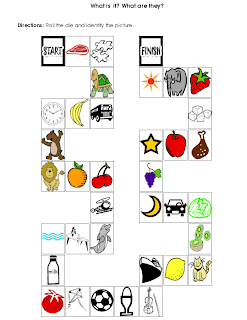skip to main |
skip to sidebar
How can UDL help ESL students?
It's important to note that there are three important characteristics in relation to UDL use in the classroom. I will explain these three principles in relation to teaching ESL. - First of all, UDL helps to make information more accessible to students by giving them many different ways to learn the information. This is especially key when teaching ESL students, since most of the time they do not have a strong grasp on the target language and thus, need other, more comprehensible modes of input to be fully successful in the classroom. For example, visual, kinesthetic, and audio cues would greatly benefit ESL students. By connecting words and ideas to pictures, ESL students will have a greater understanding of the concept. Additionally, providing double input is especially helpful for ESL because often seeing a word is not enough to make them successful in the classroom. Instead, it benefits them to see a word, hear the word, then say the word. Lastly, some concepts may need additional explanations. Instead of simply providing further oral descriptions, ESL students need gestures and actions to compliment the auditory input. By teaching with these methods, the ESL students will be provided with instruction that fits their needs, while the other students will also benefit from this reinforcement.

- Another important component of UDL is that students are given the opportunity to provide other means of communication when it comes to showing their knowledge about a topic. Of course, having ESL students complete an essay test would not be an appropriate assessment at the end of a science unit, for instance. But, ESL students can still be tested on their comprehension, but in different ways. As the WIDA standards outline, this can be done by pointing, matching, labeling, orally describing, sorting, providing examples, predicting, comparing, drawing, or categorizing, just to name a few. (A complete list of these English Language Proficiency Standards can be found at http://www.wida.us/standards/elp.aspx). For students who face a language barrier, giving them an alternative method for assessment is a great way to gain an accurate understanding of their academic performance and proficiency levels, but other students can also benefit. If the mainstream students are able to show their knowledge through other means of assessments, perhaps their strengths, weaknesses, and needs can be determined much easier as well.

- The last basic principle of UDL in the classroom requires active engagement and participation of students so learning becomes more meaningful, interactive, and enjoyable. This is especially important for ESL students, who can easily become lost and distracted during the course of the day because of the language overload. Therefore, ESL students cannot be expected to remain in their seats while staying completely focused the entire day. They need games, movement, and a wide array of activities to remain engaged. They also need practice in all four language domains (reading, writing, listening, and speaking), so this alone creates the need for a very different format in the classroom. Students need to be engaged in all four domains during the day to gain exposure to the target language, gain confidence in their abilities, and learn from their peers. So, while partaking in many different activities, they are engaged and having fun. Obviously, all students will benefit if learning in the classroom requires different activities because learning will become more enjoyable and students will be getting more out of the lessons.




1 comment:
This is a great explanation of the three principles and their connection to ESL. Well done!
Post a Comment